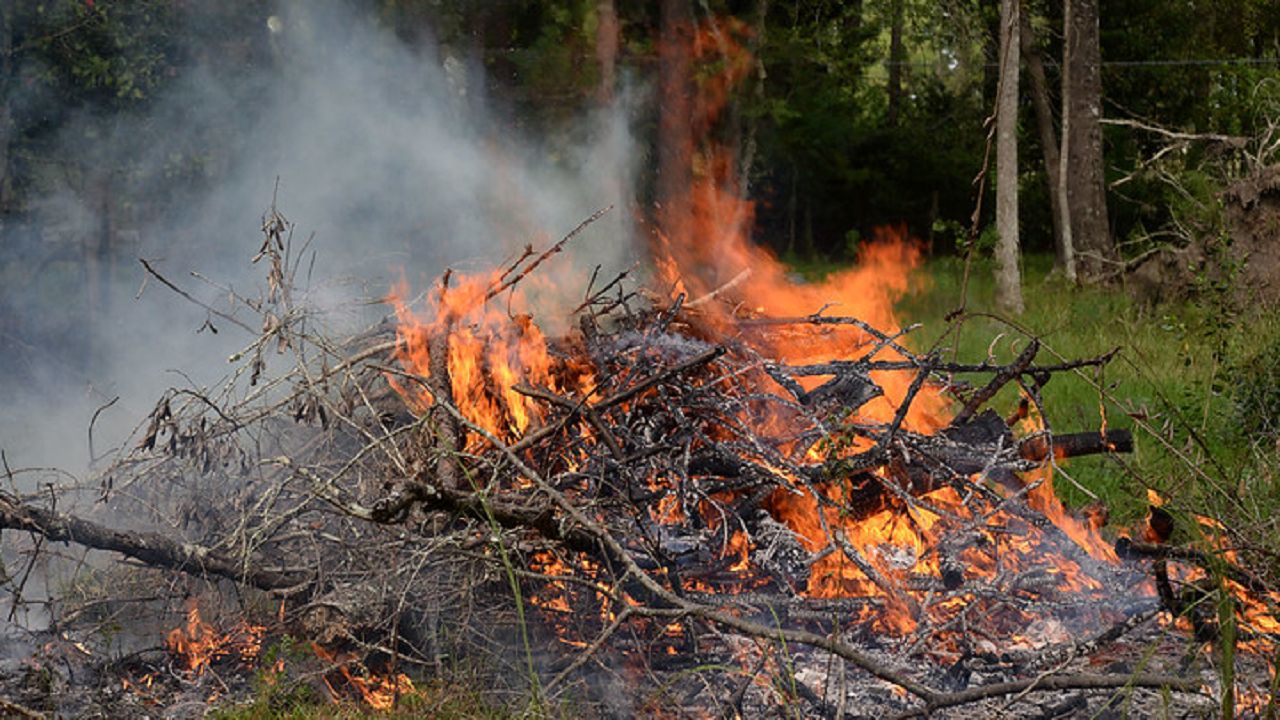Usually when you read or hear the term "wildfire," you immediately think devastation. Wildfires, especially in the western half of the country, cause widespread dangers and sometimes death along their burning path.
The majority of wildfires can be and should be prevented. There are, however, some benefits that wildfires have toward our planet. Wildfires are actually a natural component to the earth-atmosphere system.
These types of fires are known as wildland fires.
Wildland fires have been important in maintaining the natural landscape of our country for thousands of years. These fires are part of a natural process that benefits the ecosystems.
They help reduce unwanted, harmful forms of vegetation and animals.
Most of the United States is referred to as a fire-dependent ecosystem containing plant and animal species that have evolved to respond positively to fire.
These ecosystems require wildland fires in order to reproduce, grow, recover, and grow again in a way that helps fires spread naturally.
For example, in the Midwest, the primary fire-dependent ecosystems are the tallgrass prairie and pine forests through the Great Lake regions. Wildland fires in these areas serve to remove excess dead twigs, leaves, grasses, large trees, and more in order for new tree growth to occur.
It’s part of the natural cycle of the forests and landscapes. As fires burn off excess from plant materials and animal waste, it creates ash, which provides important nutrients for new growth.
Some fires may be an essential part of our ecosystems, but the majority are not. In Ohio, most of our wildfires are human influenced.
According to National Interagency Fire Center (NIFC), there were no lightning-produced fires within Ohio in the last few years. They were all human influenced.
In 2019, there was a total of 1,038 acres that burned in Ohio and a total of 498 fires reported. In 2018, it was 337 acres. The year before that, 2017, a total of 733 acres burned.
Below are national maps comparing lightning versus human-caused fires.
Unfortunately, human influence has increased the number of wildland fires. According to the NIFC, humans cause nine out of 10 fires directly or indirectly.
Naturally, wildfires can be caused by lightning strikes, but humans can create fires through campfires, arson, debris burning, discarded smoking products, power flashes, and more.
It’s important to understand wildfires threaten every part of our country including your home and community, even in the Midwest, according to FEMA.
While the vast majority of the state does not have a high potential of wildfire, the potential does exist within the state.
Based on the map above from USDA Forest Service Wildfire Hazard Potential for Ohio, the state consists of areas of non-burnable to moderate wildfire potential. These areas of highest risks are in the southern and eastern parts of the state.
The ODNR Division of Forestry has designated these areas as wildfire protection zones as seen in the map below.
Even if your county isn’t included in those areas, there is a 100% probability based on historical events that a wildfire can and will occur at any given year.
Wildfires occur typically in the spring or fall seasons and mainly in forests, or grasslands. The spring season includes March, April and May before the vegetation becomes fully green and in the fall during October and November as the leaves fall onto the ground.
The size, the intensity and severity of the burn can fluctuate and is impacted by a variety of factors. One of the main factors in weather.
Weather is the primary factor that determines the severity of fall and the following spring wildfire seasons in Ohio. Warm, windy and with low humidity is particularly susceptible to burning.
It’s important to look for drought conditions along with windy days as past fire occurrences have been linked to these weather patterns.
The National Weather Service provides watches, warnings, and outlooks on days with wildfire potential. It’s your job to stay alert and do you your part by understanding the different alerts.
Fire weather watch: there is high potential for the development of a "red flag" event, which is when wildland fires are probable in an environment given an ignition source. These are typically issued 18 to 96 hours in advance.
Red flag warning: conditions are very dry and weather parameters combine to present conditions suitable for fire danger within 48 hours.
Usually there will be at least one of the weather factors: lightning, dry frontal system, strong winds, very low relative humidity, or severe storms. On top of drought status in the region.
There are also burn bans or other advisories in your local areas where local/state governments may regulate open burning in areas.
Burning is prohibited from 6 a.m. to 6 p.m. during the months of March through May and October into November. It’s during these times wildfires can occur and are the most difficult to control.
Remember, the majority of wildfires are caused by humans. We can make a difference!
Here are some wildfire protection tips:
- Don’t burn on windy days
- Before lighting a fire, make sure winds are less than 10 mph and that the relative humidity level is above 35%
- If you are burning and your fire escapes, call 911 immediately



